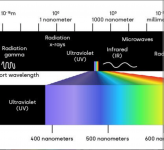CannaT
starin' at the world through my rearview
Its about visible light spectrum UV are not in that rangeAs an example, this is the chart provided by Philips themselves for their MASTER GreenPower 600W 400V E40 bulb.
UV range is 100-400nm, with the red arrow.
View attachment 18882430



